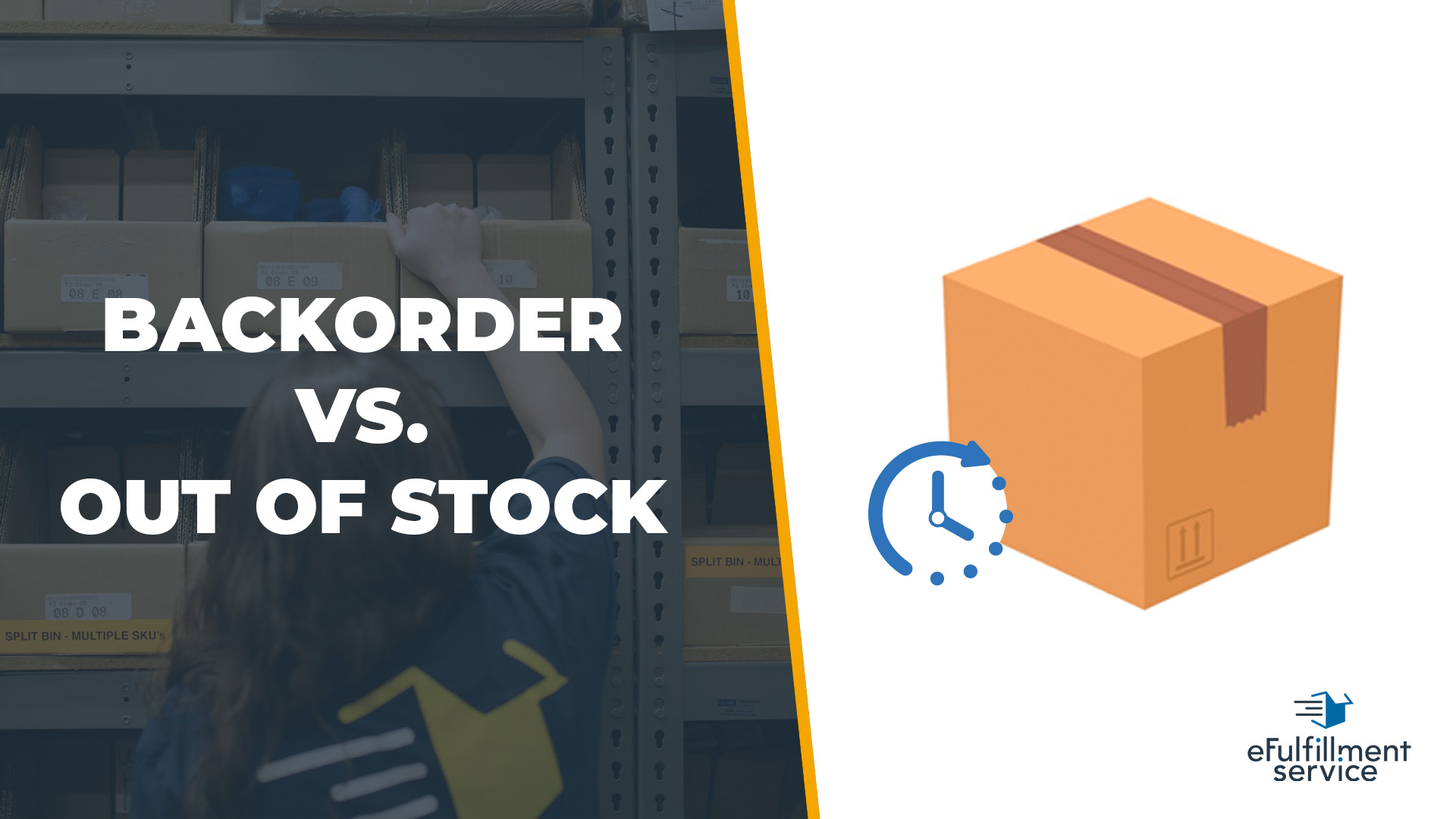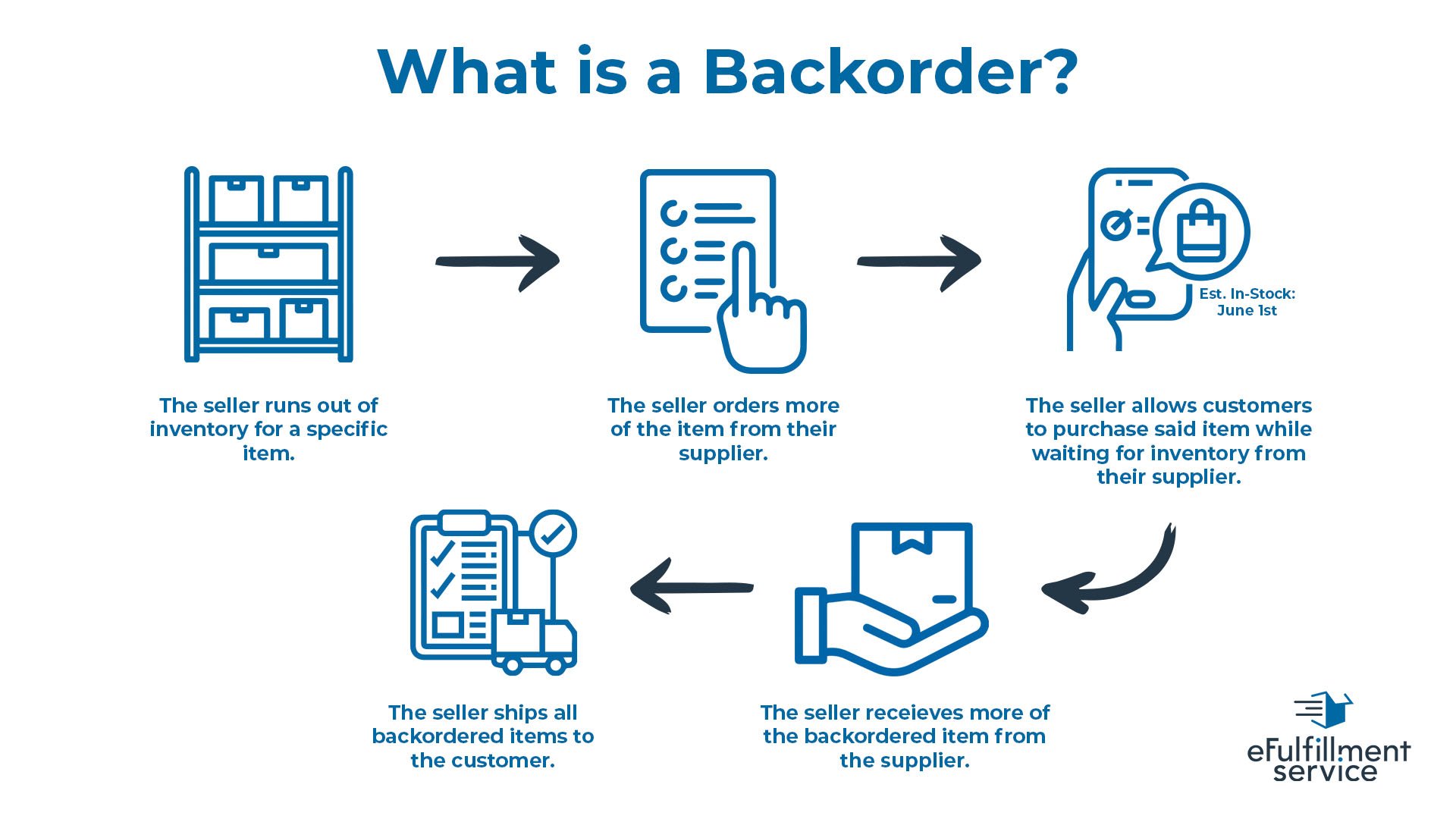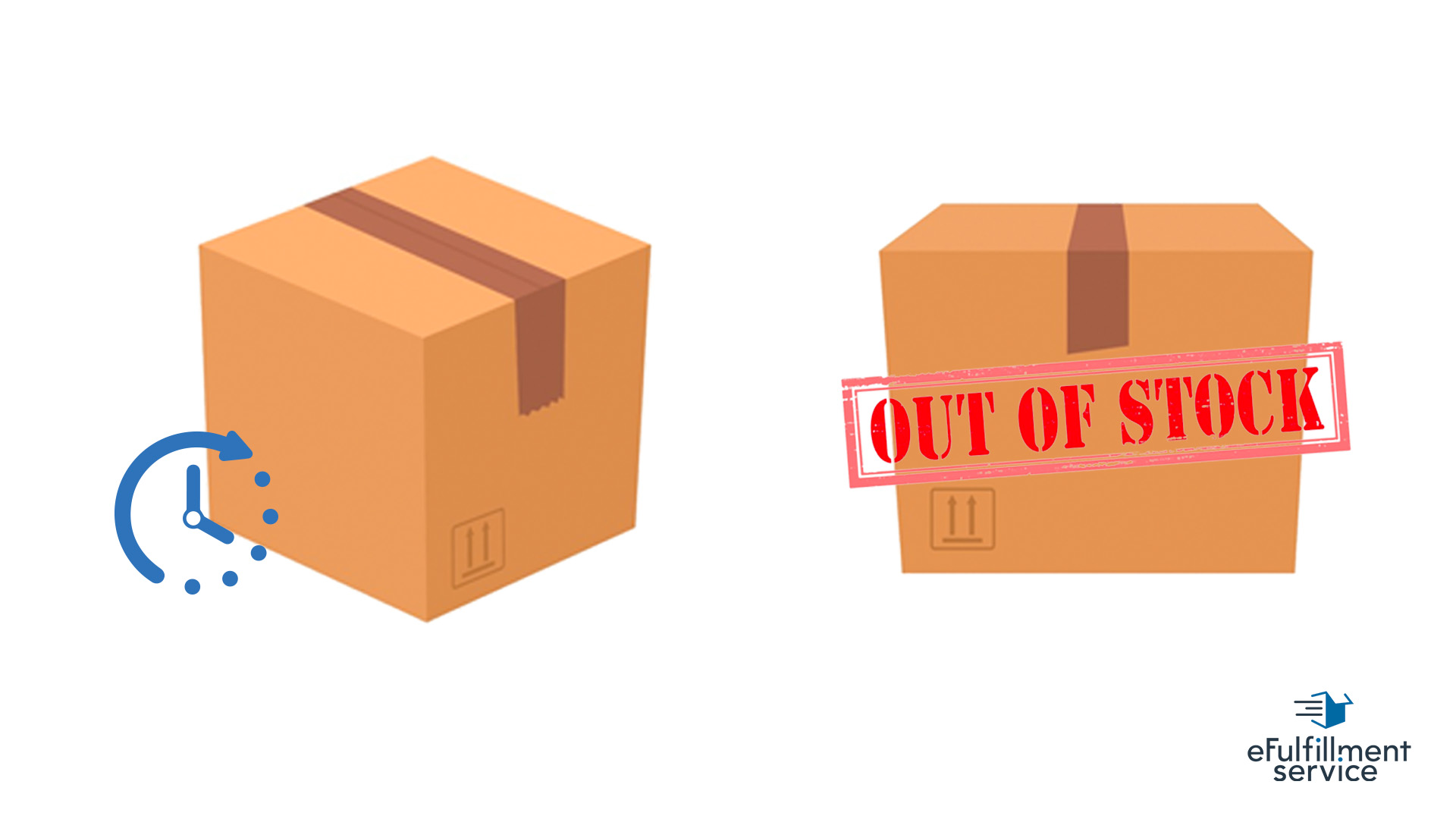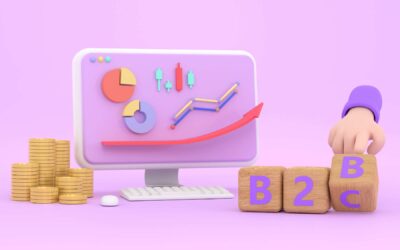
Intro to Backorders vs. Out of Stock
In a buzzing world where online shoppers are wooed with promises of two-day shipping and instantaneous gratification, mastering the art of inventory management becomes nothing short of essential.
One of the more complex parts of inventory management is understanding and appropriately handling situations when products are not immediately available — commonly referred to as “backorders” and “out of stock.” While these terms are often used interchangeably, they have distinct differences for both consumers and businesses.
This comprehensive guide aims to explain these terms, explore their impact, and offer strategic insights for effective inventory management. Whether you’re a consumer wanting to understand what happens after you click ‘buy’ or a business striving for operational excellence, this is your go-to resource for everything related to backorders and stock availability.
Jump right in: Backorder vs Out of Stock: Meanings, Definitions, and Tips
What Does a Backorder Mean?
The term “backorder” refers to an item that is out of stock at the moment but is expected to be available in the near future. Essentially, an item on backorder can still be purchased; however, it will only be shipped to the buyer once it is back in stock.
This begs the question: what does backorder mean for businesses and consumers? For businesses, it’s a way to keep generating sales even when inventory is low. For consumers, it’s an opportunity to reserve an item that they really want, albeit with a waiting period.

How Do Backorders Work?
When an item is available for backorder, it means that the product is not available for immediate shipment because it is not in stock. If you place an order for a backordered item, your order will be in a sort of “queue,” and you’ll have to wait until the item is back in stock for it to be shipped.
Often, businesses allow orders for backordered items to be placed with a clear notification about the estimated delivery timeline.
Need a bit more explanation?
This video from ZOHO Inventory offers a great example of the full backorder process!
Backorder vs Out of Stock
Backorder: This term refers to an item that is currently not in stock but can be purchased. After purchasing, the item will be shipped to the buyer as soon as it becomes available. Essentially, when a product is backordered, it means you’re reserving it in advance.
Out of Stock: When an item is labeled as “out of stock,” it means the product is currently unavailable, and you usually cannot place an order for it until inventory is replenished.

The Core Difference between Backordered and Out of Stock
The primary difference between the two terms lies in the consumer’s ability to make a purchase. With backordered items, you can still place an order, effectively reserving the item for when it becomes available again. On the other hand, an out-of-stock status generally means that the item is unavailable for purchase until restocked.
Why it Matters for Consumers
For consumers, understanding the difference is crucial for managing expectations. If you order a backordered item, you should be prepared for a wait but can rest assured that you have reserved your desired product. However, with out-of-stock items, you run the risk of the product being discontinued or sold out by the time it’s back in stock, especially if it’s a high-demand item.
Impact on Business Operations
From the business perspective, allowing backorders can keep the sales process running and may even create a sense of urgency among buyers. It’s a way to gauge demand for a particular item and helps in better inventory planning. Conversely, an out-of-stock status might turn away customers, causing them to seek alternatives, which could result in lost sales.
What Causes Backorders?
Backorders are often caused by an imbalance between supply and demand. Unexpected spikes in demand, holiday shopping seasons, manufacturing delays, or issues with a supplier can result in an item being backordered.
Seasonal items often become slow moving inventory and are commonly backordered when off-season. This is because it allows sellers to keep less inventory in their warehouse and lower storage costs during slow seasons.
The Pros and Cons of Selling on Backorder
The term “backorder” often evokes mixed feelings among business owners. While it can act as a financial cushion in times of limited stock, it also presents some operational challenges that cannot be ignored. Below, let’s break down the advantages and drawbacks of selling items on backorder in a way that will give you an insider’s perspective.
Advantages of Selling on Backorder
Continuous Sales Flow: Keeping the Cash Register Ringing
One of the most compelling advantages of offering items on backorder is the ability to continue generating revenue, even when the product is not currently in stock. This allows businesses to capitalize on consumer interest and intent to purchase, instead of losing sales opportunities due to temporary stock-outs.
Customer Commitment: Capturing Market Share from Competitors
When customers commit to a backordered item, they are less likely to continue shopping around for alternative products. This can be particularly beneficial for niche or specialized goods where consumers might find it cumbersome to find adequate replacements. By capturing their commitment, you’re effectively locking in a portion of your market share.
Better Inventory Management: A Finger on the Pulse of Demand
Selling on backorder allows you to gauge real-time customer demand without the risk of overstocking. This data can then be used for more precise inventory planning and forecasting, thereby increasing operational efficiencies and reducing costs related to excess inventory or emergency restocking.
Crowdfunding: The Backorder Model at Work
Crowdfunding campaigns like Kickstarter, Indiegogo, and Patreon are unique instances where the backorder model can work exceptionally well. In these campaigns, a product is often not yet manufactured, let alone in stock. Here’s why crowdfunding is an ideal example were the use of backordering works:
Facilitates Capital Raising
- Advance Commitment: Backorders essentially act as guaranteed sales, aiding in raising the capital needed for production.
- Proof of Concept: A high number of backorders demonstrates market demand, helping to attract additional investors.
Manages Consumer Expectations
- Transparency: Customers are usually well aware that the product is not yet available, aligning their expectations with the backorder model.
- Timelines: Campaigns often provide estimated shipping dates, keeping backers informed and managing expectations.
Supports Inventory Planning
- Pre-Sale Data: The number of backorders can guide production quantities, reducing the risk of excess inventory.
- Streamlined Operations: Businesses can better coordinate with manufacturers and suppliers based on actual demand.
Enhances Customer Engagement
- Updates & Milestones: Backers can be kept in the loop with regular updates, maintaining excitement and minimizing dissatisfaction.
- Community Building: The sense of being part of something innovative can make customers more forgiving of wait times.
In a crowdfunding context, backorders are not just a necessity but also an integral part of the business model. They not only help in capital raising but also significantly aid in inventory planning and customer engagement.
Disadvantages of Selling on Backorder
Customer Dissatisfaction
While backorders can secure sales, they can also lead to longer waiting periods, which may not sit well with some customers. If their patience wears thin, you risk eroding brand loyalty and potentially losing future business.
Operational Complexity
Managing backorders is not a simple ‘set and forget’ operation. It involves juggling various aspects like vendor timelines, warehouse capacity, and communication with customers. Mistakes or delays in any of these areas can create a domino effect that complicates your entire operation.
Risk of Cancellations
The longer a customer has to wait for a backordered item, the higher the likelihood that they’ll cancel the order. And every cancellation not only means a lost sale but also potentially incurs administrative costs for refunds and customer service efforts.
Curious About Using a 3PL to Minimize Backorders?
Get a free quote from eFulfillment Service to see how a 3PL service could help you manage your inventory.
7 Tips for Minimizing Backorders
1. Establish Safety Stock Levels
- Real-time inventory tracking: Utilize systems that allow for immediate updates on stock status to prevent sudden stockouts.
- Predicting demand: Make use of historical data to forecast demand and set a safety stock level that can cover unusual demand or supplier delays.
- Preventing customer disappointment: Keeping a safety stock ensures you don’t disappoint customers by running out of products unexpectedly.
A safety stock level acts as a buffer, safeguarding your business against unforeseen fluctuations in demand or supply. Ecommerce business owners need to maintain a well-organized inventory management system that keeps track of in-stock products in real time. Leveraging historical data allows for predicting future demand accurately, helping to avoid disappointing customers due to stockouts and maintaining a healthy business relationship with them.
2. Set Accurate Reorder Points
- Reorder point formula: Incorporate lead time demand and safety stock in days to find the exact point to reorder products.
- Technology integration: Utilize platforms like eFulfillment services for automated alerts regarding reorder points.
- Adjusting for special events: Enhance reorder quantities during promotions or product launches to meet heightened demand.
Setting accurate reorder points is pivotal in inventory management. This strategy involves calculating the exact time to reorder products to avoid running out, using technologies integrated with fulfillment service platforms. Being well-prepared for special events with higher sales velocity helps to maintain a steady stock level, ensuring customer satisfaction and enhanced sales performance.
3. Utilize Intelligent Forecasting for Popular Items
- Monitoring popular items: Regularly check inventory levels for fast-selling products.
- Adaptive planning: Alter strategies based on real-time data to avoid stockouts.
- Informed purchase decisions: Utilize real-time insights for smarter purchase order decisions.
Implementing intelligent forecasting strategies for popular items that tend to sell quickly ensures you maintain adequate stock levels. Keeping a keen eye on the demand trends and adjusting your strategies to the fluctuating market demands help in preventing backorders, fostering a responsive and agile inventory management system.
Companies like Amazon utilize sophisticated demand forecasting algorithms that analyze a massive amount of data including historical sales data, current market trends, and other relevant factors to accurately predict future demand and maintain optimal stock levels.
4. Diversify Your Supplier Network
- Backup suppliers: Establish connections with multiple suppliers for a continuous supply chain.
- Risk reduction: Lower the risk of stockouts by not relying on a single supplier.
- Supply chain stability: Maintain a steady flow of products even with disruptions.
Developing a diversified supplier network offers a safety net, ensuring that you have a steady supply of products, even when there are disruptions with your primary manufacturer. Having backup suppliers guarantees a continuous flow, reducing the risk of stockouts and fostering a resilient and flexible business model.
One company that uses this method well is Apple. Apple works with a diversified supplier base to reduce the risk associated with dependency on a single supplier. This strategy helps in mitigating the risk of backorders due to supplier failures.
5. Strategic Ordering of Products
- Balance in ordering: Find the right balance in ordering quantities to avoid overstocking.
- Preventing storage clogs: Avoid ordering excessively to prevent storage issues and inflated carrying costs.
- Strategic capital use: Ensure capital is used strategically and not tied up in overstocked inventory.
Strategically ordering products means maintaining a balance that prevents both overstocking and stockouts. It involves careful planning to ensure that the storage space is utilized optimally without inflating the carrying costs, promoting a strategic utilization of capital resources and fostering a healthy business environment.
6. Analyze Inventory Carrying Costs
- Understanding carrying costs: Delve deep into the factors affecting the carrying costs of your inventory.
- Strategic spending: Calculate additional costs over the per-unit price to strategize spending effectively.
- Effective inventory management: Analyze various elements like SKU numbers and turnover rate for a streamlined inventory system.
A deep understanding of inventory carrying costs, influenced by various factors including SKU numbers and inventory turnover rate, is pivotal in effective inventory management. By analyzing these dynamics, you can strategically plan your purchases to maintain an efficient inventory system while avoiding unnecessary expenditures.
7. Collaborate with eCommerce Fulfilment Providers (3PLs)
- Leveraging technology: Utilize technology offered by 3PLs like eFulfillment Service for intelligent inventory management.
- Timely alerts: Get timely alerts for stock replenishment to prevent backorders.
- Smooth business operations: Ensure business continuity and customer satisfaction by steering clear of backorder complexities.
Collaborating with a eCommerce fulfillment provider like eFulfillment Service not only helps in intelligent inventory management but also in navigating the intricate landscape of backorders. Leveraging their expertise ensures smooth business operations with timely alerts that help in maintaining satisfactory inventory levels, thereby promising a seamless customer service experience.
How to Minimize Backorders with a 3PL (Third-Party Logistics)
Third-Party Logistics providers can play a crucial role in backorder prevention. They often offer sophisticated inventory management systems that can alert you well before stock levels reach a point where backorders are necessary. Outsourcing fulfillment can help maintain a more efficient inventory system, reducing the likelihood of items being backordered.
The Strategic Advantage of 3PL Providers
Third-Party Logistics providers are akin to strategic partners who specialize in optimizing various facets of supply chain management, including inventory control, distribution, and fulfillment. Utilizing the expertise and advanced technologies offered by a reputable 3PL can be instrumental in streamlining your inventory processes and reducing operational inefficiencies that often lead to backorders.
Advanced Inventory Management Systems
Manual tracking and outdated systems can lead to lapses in inventory monitoring, making your organization susceptible to backorders. Modern 3PL providers utilize advanced inventory management systems capable of real-time tracking and predictive analytics.
These systems are programmed to send automated alerts before stock levels dip to the point of necessitating a backorder, thereby enabling preemptive action.
Selecting a 3PL Partner: Aligning Goals and Capabilities
Choosing an appropriate 3PL partner is not just a matter of outsourcing logistics; it’s about aligning your business objectives with their capabilities. A well-matched 3PL provider will not only offer tailored solutions but will also drive efficiencies that can mitigate the risks of items going into backorder status.
Enhanced Customer Experience: A Tangible ROI
Transitioning to a 3PL partnership can dramatically improve your end-to-end customer experience. By leveraging advanced systems to keep stock levels optimized, you can eliminate the major pain point of backorders for your customers. The benefit is twofold: not only does this improve customer satisfaction, but it also increases the likelihood of repeat business.
Ready to start managing inventory with a 3PL?
See how a company like eFulfillment Service could bring your inventory management game to the next level! Avoid letting items go on backorder with an expert 3PL.
Wrapping It Up: Backorder vs Out of Stock
Even if the terms are sometimes used interchangeably, “Backorder” and “out of stock” are not the same. Backorders let you keep selling and gauge what customers really want. But watch out: long waits can cause disgruntled customers and lost sales in the long run. “Out of stock” means sales come to a full stop, and the item may not return to stock any time soon.
If you’re shopping, knowing these terms helps you know what you’re in for. Have a backordered item? Great, you have effectively reserved that item when it is back in stock. “Out of stock”? That item might be gone for good.
On the business side, use tools like analytics and 3PL providers to keep backorders to a minimum. They can help you manage stock better and keep customers happier.
So whether you’re a savvy shopper or a business owner, understanding backorders and out-of-stock items can save you time, stress, and maybe even some cash. Stay informed and you’ll stay ahead.
FAQs: Backorder vs Out of Stock
How long should you wait for a backorder?
The wait time for a backorder can vary greatly depending on a variety of factors such as the specific circumstances causing the backorder and the seller's restocking timeline. However, the average wait time for backorders can vary between 14-21 days.
Generally, businesses will provide an estimated time frame during which they expect to fulfill backorders. It's always a good idea to check this estimate and stay in communication with the seller to receive any updates on your order status.
Will I still get my order if it's backordered?
Yes, when you place an order for a backordered item, you are essentially reserving the item for when it becomes available again. It will be shipped to you as soon as it is back in stock. However, do note that in very rare cases, due to unforeseen circumstances, a business might have to cancel backordered items, in which case you will be notified and refunded.
Why is my order on backorder?
Your order might be on backorder due to a temporary shortage in the inventory, which can occur for a variety of reasons including a sudden spike in demand, supply chain issues, manufacturing delays, or logistical challenges. Businesses allow backordering to avoid losing sales and to allow customers to reserve items even during a stockout.
Can backorder dates change?
Yes, backorder dates can change based on fluctuations in the supply chain dynamics. Factors such as delays in manufacturing, transportation issues, or an unexpected surge in demand can affect the initial estimated availability date. It's important to keep an eye on any updates from the seller and to be prepared for potential changes in the delivery timeline.
What happens when you backorder something?
When you backorder something, you are reserving the item so that when it becomes available, it will be shipped to you as the first priority. Your payment method might be charged at the time of placing the order or when the item ships, depending on the business's payment policy. You will be kept in the loop regarding the expected shipping date and any updates that might occur.
What does it mean to be out of stock?
Being "out of stock" means that an item is currently unavailable for purchase due to a depletion in the inventory. Unlike backordered items, out-of-stock items generally cannot be purchased until they are restocked. In such scenarios, you might see an option to be notified when the item is back in stock, allowing you to purchase it once it becomes available again.
Want to get started with a 3PL?
Get a free quote from eFulfillment Service and see how a 3PL could simplify your ecommerce fulfillment!




0 Comments